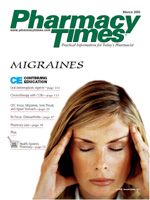Publication
Article
Pharmacy Times
New Dietary Guidelines Challenge Obese Americans
Author(s):
The Department of Health andHuman Services (HHS) recentlyannounced the release ofDietary Guidelines for Americans 2005, aresearch-based booklet advising theAmerican public on healthful eatingand exercise strategies. This editionemphasizes calorie reduction and exerciseand offers some of the strongestdietary guidelines to date. With twothirds of the American populationoverweight or obese and over half thepopulation not getting enough physicalactivity, attention to the newrevised guidelines is necessary to sparklifestyle changes for unhealthy Americans.
According to HHS Secretary TommyThompson, "These new dietary guidelinesrepresent our best science-basedadvice to help Americans live healthierand longer lives. Promoting gooddietary habits is key to reducing thegrowing problems of obesity and physicalinactivity and to gaining thehealth benefits that come from a nutritionallybalanced diet."The federalgovernment uses these dietary guidelinesfor planning school lunch menusand other programs.
The new guidelines highlight 41 recommendations—23 for the generalpopulation and 18 for special populations—grouped into 9 areas: adequatenutrients within calorie needs, weightmanagement, physical activity, foodgroups to encourage, fats, carbohydrates,sodium and potassium, alcoholicbeverages, and food safety. The adviceranges from the obvious—"To preventgradual weight gain over time, makesmall decreases in food and beveragescalories and increase physical activity"—to the specific—"Consume less than2300 mg (approximately 1 teaspoon ofsalt) of sodium per day."
These dietary guidelines do not necessarilyoffer any new advice on healthfuleating habits. Rather, they reinforcewhat many Americans already know: eatnutritious foods; limit bad fats, cholesterol,sugar, salt, and alcohol; and getmore exercise. These guidelines eschewthe advice of fad diets, such as cuttingout all carbohydrates or fats, in favor ofpromoting a balanced diet. Business andindustry groups have already taken issuewith some of the recommendations limitingsugar and enriched grains.
The most challenging recommendationsconcern exercise. The guidelinesadvise everyone to get a minimum of30 to 60 minutes of moderate exerciseevery day, which would include a briskwalk or bike. Those trying to loseweight will need to exercise moreintensely for 60 to 90 minutes eachday. Many Americans will be wonderinghow they can fit additional exercisetime into already hectic schedules.
Critics of the guidelines compare thelengthy recommendations in the currentguide to the succinct and easier-to-understand recommendations ofearlier versions. However, the revisedguidelines include a different form ofmeasurement designed to make lifeeasier for Americans—instead of thenebulous "serving size,"these guidelinesare based on common householdmeasurements such as cups andounces. For example, in a 2000-calorie/day diet, people are encouragedto consume 4 1/2 cups of fruits andvegetables and 3 cups of fat-freeor low-fat milk or a similar dairyproduct.
Director of the Center for WeightManagement at the University of TexasMedical Branch, Dr. Russell LaForteexplained that these recommendeddaily allowances have been shown toprevent classic syndromes such asscurvy, a vitamin C deficiency. Becausethese are simply guidelines, he says, itis unclear whether the doses would beoptimum for everyone.
As for the usefulness of the newguidelines, LaForte commented, "Ifyou eat what the report tells you to eat,you'll probably do better than you arenow. But none of the healthy eatingwill do you any good if you don'tincrease your physical activity. This, asfar as I am concerned, was the USDA's[US Department of Agriculture's] bestrecommendation."
Ms. Farley is a freelance medical writerbased in Wakefield, RI.







